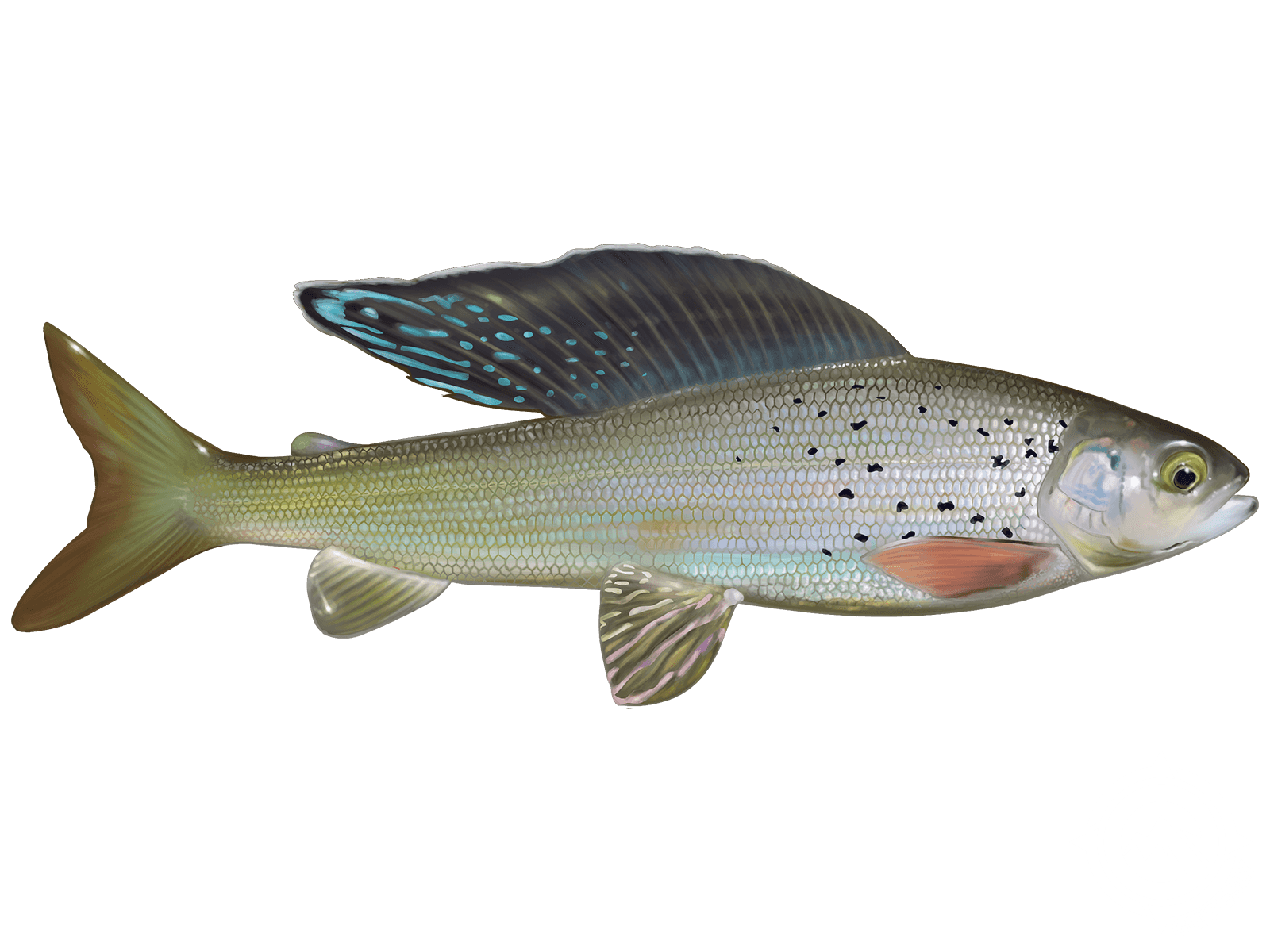Arctic Grayling

Species Details
Thymallus Arcticus
Salmonidae
Salmoniformes
Lake, River
3 - 8 lbs.
10" - 24"
Arctic Grayling (Thymallus arcticus)
Fish Description
The Arctic Grayling is a member of the salmon family. It derived its name from its thyme-smelling meat. It is often associated with the European grayling.
Arctic Graylings have remarkable sail-like dorsal fins with colorful markings on their bodies. The color depends on the location of the Arctic Grayling; its body can be silver, black, gold, or blue. It boasts a gold streak lining its bottom. This striking feature makes it one of the most attractive freshwater fishes. It also has black freckles distributed from its head down to its rear. Arctic Graylings are smaller than their cousins salmon, most trout, and char.
Diet
Arctic Graylings love to feed on zooplanktons. As they grow older, they also eat insects found on the surface of the water as well as fish eggs, planktons, lemmings, and other crustaceans. Generally, they eat whatever is available to them.
Size
The average size for the Arctic Grayling is 10-24 inches even though it can reach up to 30 which is rare. Their weight can range from 1 to 4 pounds. In Alaska, the largest Arctic Grayling caught measured 24 inches and weighed 5 pounds. Arctic Graylings may live up to 30 years old.
Interesting Facts
- Arctic Graylings are a migratory species of fish. Most graylings found in rivers stay in fast waters to avoid predators, while ones from lakes are found in broken rock shorelines. During winter, they swim in deep rivers where the water has not frozen (they stay there for around 8 months), whereas, during spring and summer, they move upstream and stay in their spawning areas.
- Arctic Graylings that live in the most crystal clear waters tend to show the most striking colors and body markings.
- Male Arctic Graylings typically have brighter-colored scales (green, blue, and orange) compared to females who are covered in dull-colored scales.
Fishing Techniques - How to Catch Arctic Grayling
Fly fishing is a good technique for catching Arctic Graylings; anglers may use dry or wet flies and black or brown Woolly worms as baits.
The best months for fly fishing Arctic Graylings would be from June to September. In June, dry flies or small spinners may be used to tempt and hook the Arctic Graylings found in rivers. Note that the spinners to be used must range only from 1 to 1.5 inches since Graylings have small mouths. In July, they thrive in rivers to the point that they are literally found all around the shore. From August to September, they would be at their peak season for feeding and would remain in the shallow waters, making it very easy to see and catch.
Habitat and Distribution
They are native to several states in Montana and Michigan although their species is now extinct in the latter. They can also be found in lakes like in the Uinta Mountains and the Toppings Lake. They thrive in drainage from Canada to Alaska as they require clean, highly oxygenated water to survive. They are also mostly found in higher elevations or higher altitudes.
They like the cold waters of medium to large lakes and rivers. However, when they breed, they would return to the rocky streams. They spawn from May to June in clear, shallow waters with a rocky bottom. They like open waters with huge quantities of oxygen.







